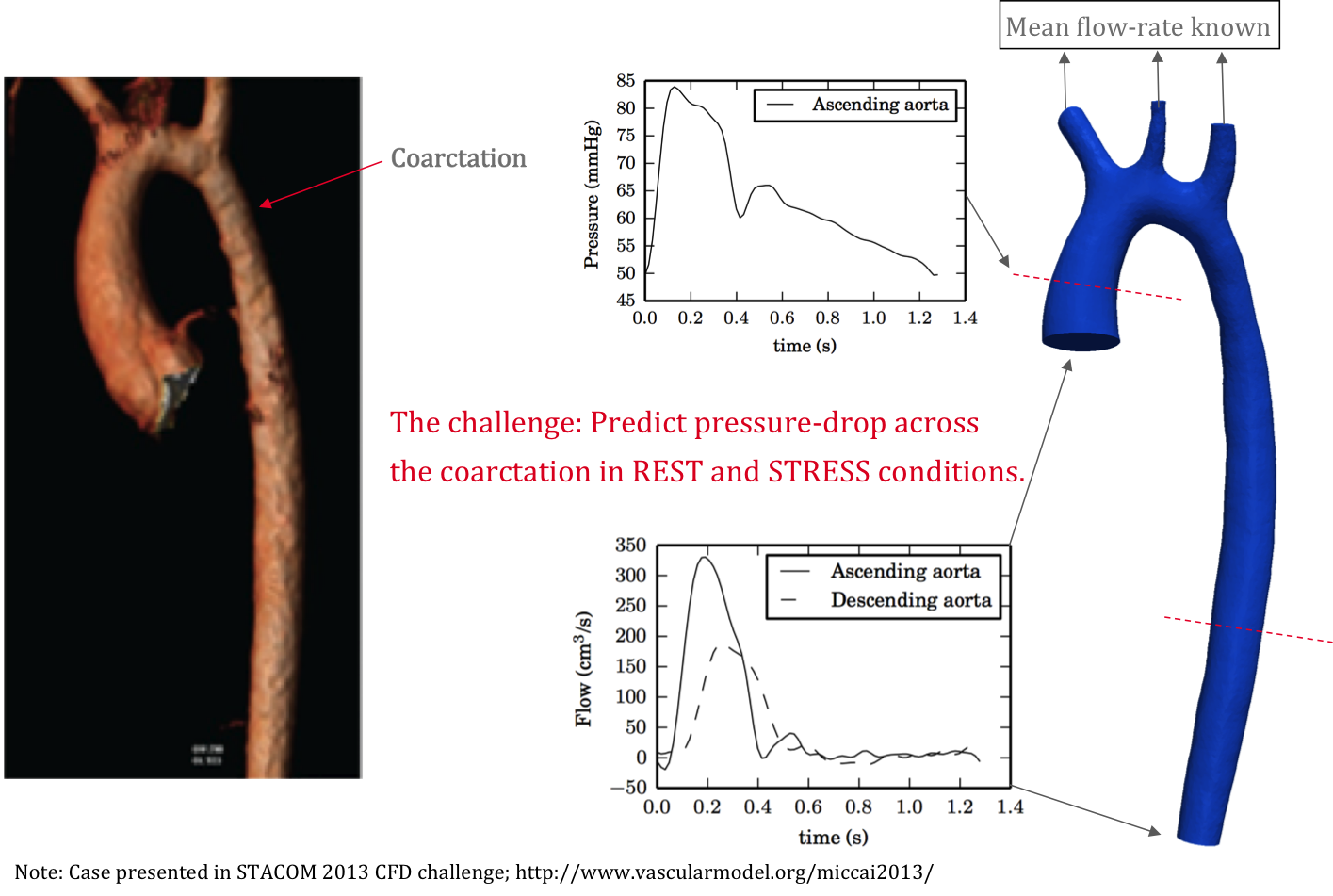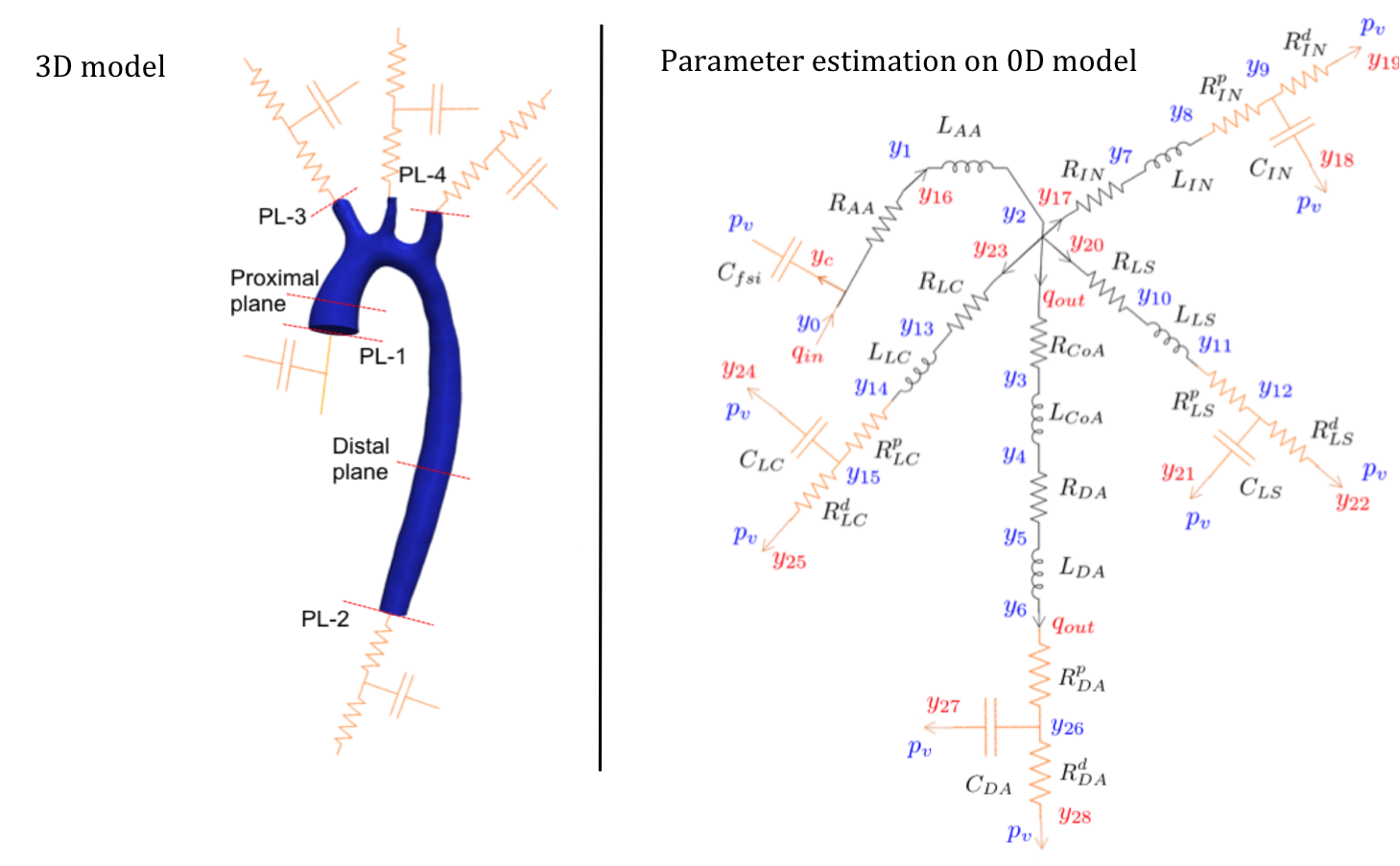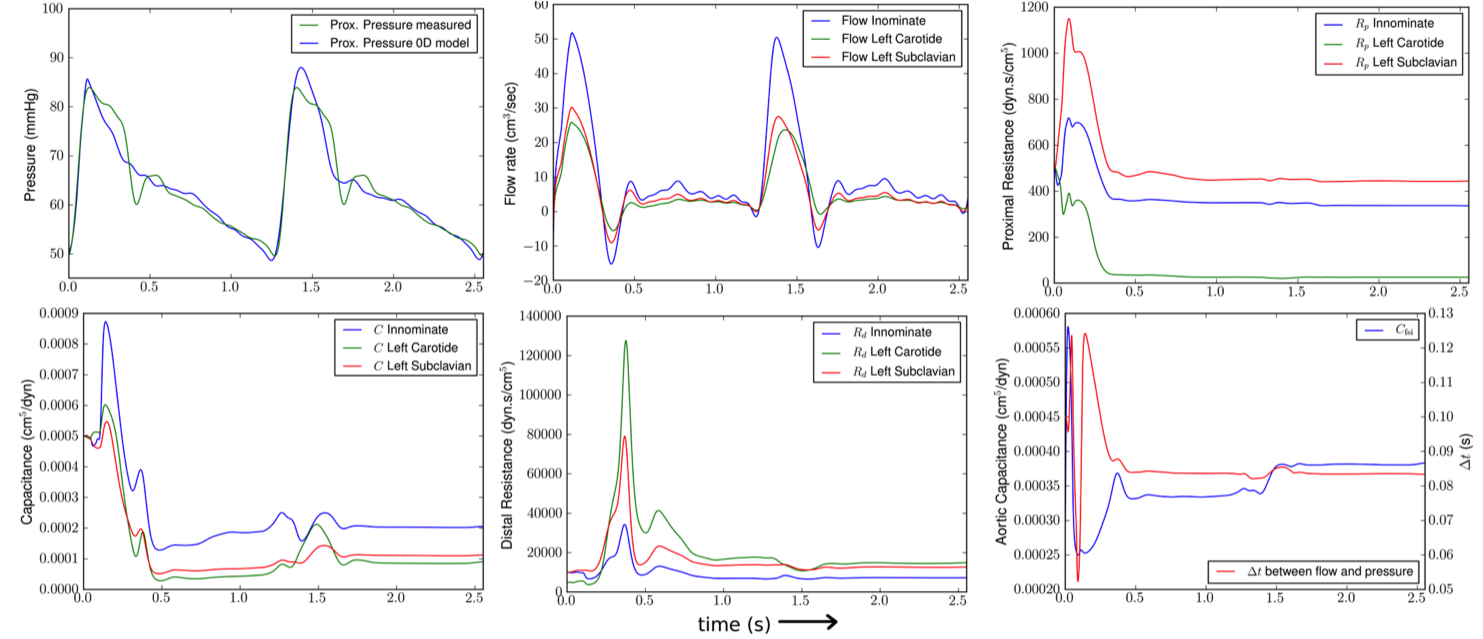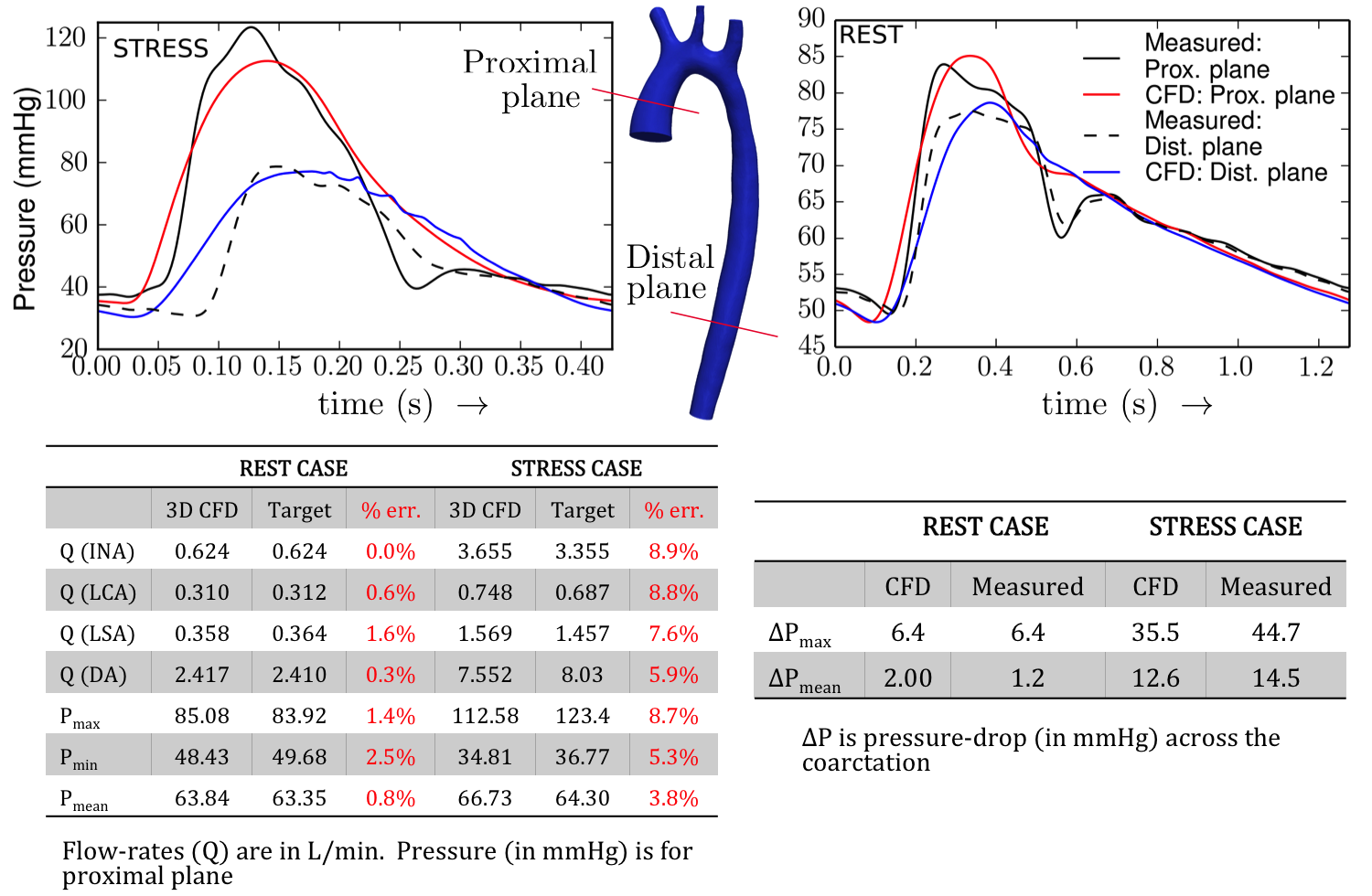Patient specific haemodynamic analysis (aortic coarctation)
For details of this work see this article. For an overview, please see below.
Sophisticated numerical methods have been developed over the past decades which enable simulation of cardiovascular haemodynamics in complex geometries. The aims of such research are:
- an improved analysis leading to an in-depth understanding of the human circulation,
- the ability to analyse what-if scenarios, for example those involving surgical planning,
- the ability to design medical devices, and
- the ability to perform accurate/alternate diagnosis, for example patient assessment in conditions which are not easy to replicate in clinical settings.
A geometric multi-scale modelling is usually adopted to analyse patient-specific haemodynamics where the area of interest is represeted by a full 3D model while the rest of the circulation is represented by parameterised reduced-order (usually 0D) models. Given the significant inter-patient variability found in the human population it is imperative that such models be adapted individually for each patient. This adaptation has two aspects: first, that an accurate geometry, via medical imaging, be constructed for the area of interest, for example a diseased artery segment; and second, that the boundary conditions, represented by the reduced-order models, be personalised to the patient. The research in this area focusses on the latter aspect. In particular, methodologies to efficiently estimate the model parameters from individual clinical measurements, such as those of blood-pressure and flow-rates, are developed. Furthermore, the issue of identifiability, i.e. whether or not the parameters can be identified from a particular set of measurements, is addressed.
Case study: STACOM 2013 CFD challenge
The Challenge

Parameter estimation models
Parmaeter estimation is performend on a reduced order (0D) representation.

Parameter estimation method:
The unscented Kalman filter (UKF) is employed for parameter estimation from clinical measurements.

Results:
The prediction of pressure-drop across the coarctation using CFD is shown below
